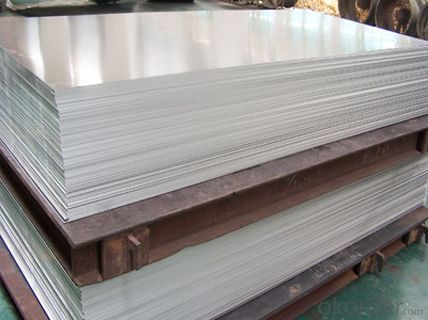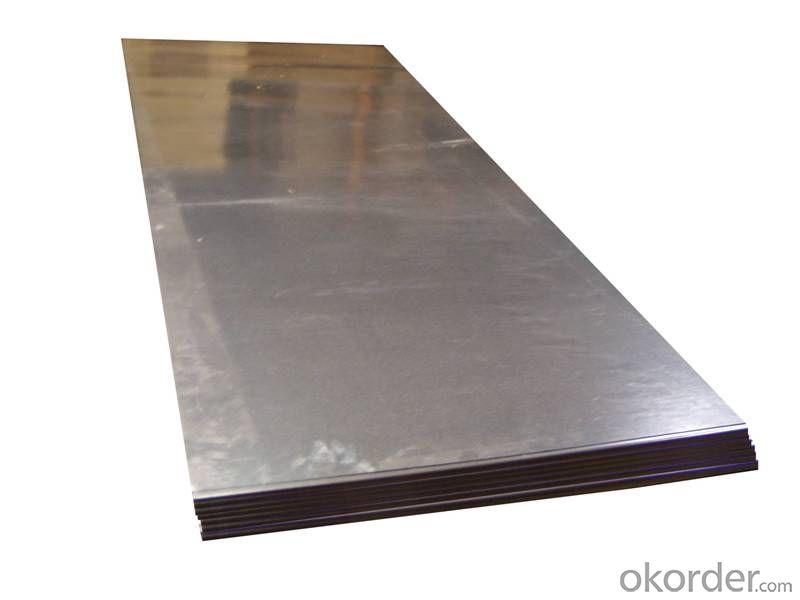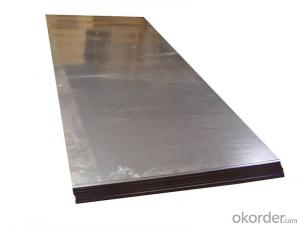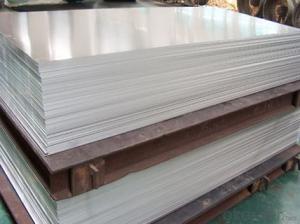Hot Rolled/Cold Rolled ms Carbon Steel Plate C45 Q235 A36
- Loading Port:
- Tianjin
- Payment Terms:
- TT OR LC
- Min Order Qty:
- 1 m.t.
- Supply Capability:
- 10000 m.t./month
OKorder Service Pledge
OKorder Financial Service
You Might Also Like
Item specifice
Hot Rolled/Cold Rolled ms Carbon Steel Plate C45 Q235 A36
Specifications
Hot Rolled Steel Coil
Commodity:Prime Hot Rolled Steel Coil
Steel Grade: Q235B/ASTM A36/S235JR/S275JR/Q345B/Q345C
BV SGS
Main application
1. Automobile, Bridges, Buildings,
2. Machinery, Pressure vessel industries.
3. Ship building, Engineering construction,
4. Mechanical manufacturing, Pavement slab, ect.
Other Products
Ship plate
Boiler steel plate
Corrosion resistant steel plate
Low alloy high strength steel plate
Alloy structural steel plate
Steel plate for bridge building
Structural steel plate for building
Description
Type | Hot rolled steel plate/Mild steel plate/black steel plate/Carbon steel plate/sheet |
Standard | ASTM A20/A20M, ASTM A36/A36M, JIS G3115,DIN 17100,EN 10028 |
Material | A36,A106Gr.B,Q235,Q345,Q195,ST37-2,ST52-3,A516-Gr.55/Gr60/Gr65,Gr70,A204,A378-Gr.2/Gr.12/Gr22,13CrMo44,10CrMo910,15Mo3,A515 Cr.60/Cr55/Cr65,4140,4130 etc |
Dimension | Thickness: 0.4mm-280mm as customer's requirement |
Width: 1000mm,1219mm,1250mm,1500mm,1800mm,2000mm,2200mm,2500mm,3000mm, as customer's requirement | |
Length:2000mm,2438mm,3000mm,6000mm,as customer's requirement | |
Surface | Clean, blasting and painting according to customer requirement |
Application | It is widely used in Building Construction,Bridge,Architecture,Vehicles Components, hipping,High pressure container,Boiler,Large Structure steel etc |
Picture


- Q:Are stainless steel sheets suitable for elevator doors?
- Yes, stainless steel sheets are suitable for elevator doors. Stainless steel is a durable and corrosion-resistant material that can withstand the wear and tear associated with elevator use. It also offers a sleek and modern appearance, making it a popular choice for elevator doors in various settings.
- Q:How do you determine the weight of a stainless steel sheet?
- To determine the weight of a stainless steel sheet, you need to know its dimensions (length, width, and thickness) and the density of stainless steel. By multiplying the volume of the sheet (length x width x thickness) with the density, you can calculate its weight.
- Q:How do stainless steel sheets differ from regular steel sheets?
- There are several key differences between stainless steel sheets and regular steel sheets. Firstly, stainless steel is an alloy that contains a minimum of 10.5% chromium by mass. This chromium content creates a protective passive layer on the steel's surface, preventing corrosion and staining. On the other hand, regular steel sheets are prone to rust and corrosion when exposed to moisture or certain chemicals. Secondly, stainless steel sheets have superior resistance to heat and oxidation compared to regular steel sheets. This makes stainless steel an excellent choice for applications that require high temperature resistance, like industrial furnaces or automotive exhaust systems. Thirdly, stainless steel sheets have exceptional strength and durability, making them suitable for various structural and industrial uses. Regular steel sheets may have lower strength and durability, depending on their composition and manufacturing process. Moreover, stainless steel sheets have an appealing appearance due to their smooth and shiny surface. This aesthetic quality makes them a popular choice in architectural, interior design, and decorative applications. Lastly, stainless steel sheets are known for their hygienic properties. They are non-porous and easy to clean, making them commonly used in industries with strict hygiene requirements, such as food processing, pharmaceuticals, and healthcare. In conclusion, stainless steel sheets differ from regular steel sheets in terms of their corrosion resistance, heat resistance, strength, appearance, and hygiene properties. These unique characteristics make stainless steel sheets the preferred material for many industries and applications.
- Q:What are the different types of stainless steel sheet textures available?
- There are several different types of stainless steel sheet textures available, each offering a unique aesthetic and functional appeal. Some of the commonly used textures include: 1. Brushed: This texture is achieved by brushing the stainless steel surface with abrasive materials in a unidirectional pattern. It creates a smooth, satin-like finish that is commonly seen in kitchen appliances and decorative applications. 2. Mirror: As the name suggests, this texture creates a highly reflective and mirror-like surface. It is achieved by polishing the stainless steel sheet using progressively finer abrasive materials until a reflective finish is obtained. Mirror-textured stainless steel sheets are often used in architectural and decorative applications. 3. Embossed: This texture involves imprinting patterns or designs onto the stainless steel sheet using embossing rollers. The raised patterns add depth and visual interest to the surface, making it a popular choice for interior design applications such as wall cladding or elevator panels. 4. Perforated: This texture involves creating a pattern of holes or perforations on the stainless steel sheet. It allows for the passage of light, air, or liquids while adding a decorative element to the surface. Perforated stainless steel sheets are commonly used in architectural, interior design, and filtration applications. 5. Etched: This texture is achieved by chemically etching the stainless steel surface using acid or other corrosive substances. The etching process creates a pattern or design on the surface, resulting in a visually appealing, textured finish. Etched stainless steel sheets are often used in decorative applications such as signage, elevator doors, or wall panels. 6. Hammered: This texture involves using hammers or other tools to create a hammered or dimpled pattern on the stainless steel sheet. It adds a rustic, textured look to the surface and is commonly used in architectural and decorative applications. These are just a few examples of the different types of stainless steel sheet textures available. Depending on the desired aesthetic and functional requirements, there are various other textures and finishes that can be applied to stainless steel sheets to achieve different looks and effects.
- Q:Can stainless steel sheets be used for aerospace fasteners?
- Aerospace fasteners can indeed utilize stainless steel sheets. The reason for stainless steel's popularity in aerospace applications lies in its exceptional resistance to corrosion, impressive strength, and long-lasting nature. This material can endure both extreme temperatures and challenging environments, rendering it suitable for aircraft components that face demanding conditions. By manipulating stainless steel sheets into various shapes and sizes, they can function as fasteners like screws, bolts, and rivets, providing a dependable and secure connection within aerospace structures. Furthermore, stainless steel's lack of magnetic properties proves advantageous in specific aerospace scenarios where reducing magnetic interference becomes crucial. All in all, stainless steel sheets represent a trustworthy and extensively employed choice for aerospace fasteners.
- Q:What are the common uses of stainless steel sheets in the food industry?
- Stainless steel sheets are widely used in the food industry due to their numerous beneficial properties. One common use of stainless steel sheets in the food industry is for food processing equipment. These sheets are used to fabricate machines such as mixing tanks, conveyors, and food processing tables. Stainless steel sheets are preferred for this purpose because they are resistant to corrosion, easy to clean, and do not react with food substances, ensuring the food's safety and hygiene. Another common use of stainless steel sheets in the food industry is for food storage and transportation. Stainless steel sheets are often used to manufacture containers, tanks, and barrels that are used to store and transport food products. The corrosion resistance of stainless steel ensures that the food is protected from contamination and spoilage during storage and transportation. Stainless steel sheets are also used for kitchen equipment in the food industry. Countertops, sinks, and cabinets are frequently made from stainless steel sheets due to their durability, heat resistance, and ease of cleaning. These qualities make stainless steel sheets ideal for use in food preparation areas where hygiene is of utmost importance. Furthermore, stainless steel sheets are utilized in the construction of food service equipment such as ovens, grills, and refrigerators. These sheets are crucial in maintaining the desired temperature and preventing the growth of bacteria, ensuring that the food served is safe and of high quality. In summary, stainless steel sheets are commonly used in the food industry for food processing equipment, food storage and transportation, kitchen equipment, and food service equipment. Their corrosion resistance, easy maintenance, and ability to uphold hygiene standards make them an ideal choice for various applications in the food industry.
- Q:How do I remove stains or marks from stainless steel sheets?
- To effectively eliminate stains or marks on stainless steel sheets, a few simple steps can be taken: 1. Initiate the process by cleansing the stainless steel surface with warm water and a mild detergent or dish soap. Take a soft cloth or sponge and gently scrub the affected area. Rinse thoroughly with clean water and dry with a towel. 2. If the stain persists, the utilization of white vinegar can be attempted. Dampen a cloth or sponge with vinegar and gently rub the stained area. The acidic properties of vinegar aid in breaking down the stains. Rinse the surface with water and dry it completely. 3. In the case of more stubborn stains or marks, a paste can be concocted using baking soda and water. Apply the paste to the affected area and gently rub it in using a soft cloth or sponge. Allow it to sit for a few minutes, then rinse with water and dry thoroughly. 4. Should the aforementioned methods prove ineffective, resorting to a stainless steel cleaner specifically designed for stain or mark removal is advisable. Adhere to the instructions on the cleaner's packaging for optimal results. Remember to rinse the surface thoroughly and ensure complete drying after employing a commercial cleaner. 5. It is essential to refrain from using abrasive cleaners, steel wool, or harsh chemicals on stainless steel sheets, as they possess the potential to scratch or damage the surface. Additionally, it is recommended to always test any cleaning method or product on a small, inconspicuous area before applying it to the entire surface. By adhering to these steps and utilizing appropriate cleaning methods, stains or marks can be effectively eradicated from stainless steel sheets, thereby restoring their original shine and appearance.
- Q:Can stainless steel sheets be bent or formed without cracking?
- Yes, stainless steel sheets can be bent or formed without cracking. Stainless steel is known for its excellent formability and ductility, which allows it to be easily bent, shaped, or formed into various configurations. However, the extent to which stainless steel can be bent without cracking depends on several factors, including the grade and thickness of the stainless steel, the type of bending or forming process used, and the equipment and techniques employed. It is important to use proper bending techniques, such as using appropriate bending tools, applying gradual and consistent pressure, and avoiding excessive force or sharp bends, to prevent cracking. Additionally, preheating or annealing the stainless steel sheets can also improve their formability and reduce the risk of cracking during bending or forming operations.
- Q:Are stainless steel sheets suitable for medical implants?
- Stainless steel sheets are indeed appropriate for medical implants. This is because stainless steel, which is commonly utilized in medical implants, possesses desirable qualities such as resistance to corrosion, strength, and biocompatibility. These sheets can be shaped and sized in various ways, making them adaptable for different types of implants. Moreover, stainless steel has been extensively researched and proven to be safe for long-term implantation in the human body. In addition, it is cost-effective when compared to alternative implant materials. However, it is crucial to emphasize that the particular grade of stainless steel and the surface finish play pivotal roles in determining its suitability for medical implants. The grade of stainless steel must meet biocompatibility and corrosion resistance standards, while the surface finish must be smooth to minimize the risk of infection and encourage proper tissue integration. In conclusion, stainless steel sheets are a dependable and widely utilized material for medical implants.
- Q:Can stainless steel sheets be used for outdoor applications?
- Yes, stainless steel sheets can be used for outdoor applications. Stainless steel is highly resistant to corrosion, making it ideal for outdoor use where it will be exposed to moisture and other environmental factors. It is commonly used for outdoor structures, architectural elements, and equipment in industries such as construction, transportation, and marine.
1. Manufacturer Overview |
|
|---|---|
| Location | |
| Year Established | |
| Annual Output Value | |
| Main Markets | |
| Company Certifications | |
2. Manufacturer Certificates |
|
|---|---|
| a) Certification Name | |
| Range | |
| Reference | |
| Validity Period | |
3. Manufacturer Capability |
|
|---|---|
| a)Trade Capacity | |
| Nearest Port | |
| Export Percentage | |
| No.of Employees in Trade Department | |
| Language Spoken: | |
| b)Factory Information | |
| Factory Size: | |
| No. of Production Lines | |
| Contract Manufacturing | |
| Product Price Range | |
Send your message to us
Hot Rolled/Cold Rolled ms Carbon Steel Plate C45 Q235 A36
- Loading Port:
- Tianjin
- Payment Terms:
- TT OR LC
- Min Order Qty:
- 1 m.t.
- Supply Capability:
- 10000 m.t./month
OKorder Service Pledge
OKorder Financial Service
Similar products
New products
Hot products
Related keywords





























